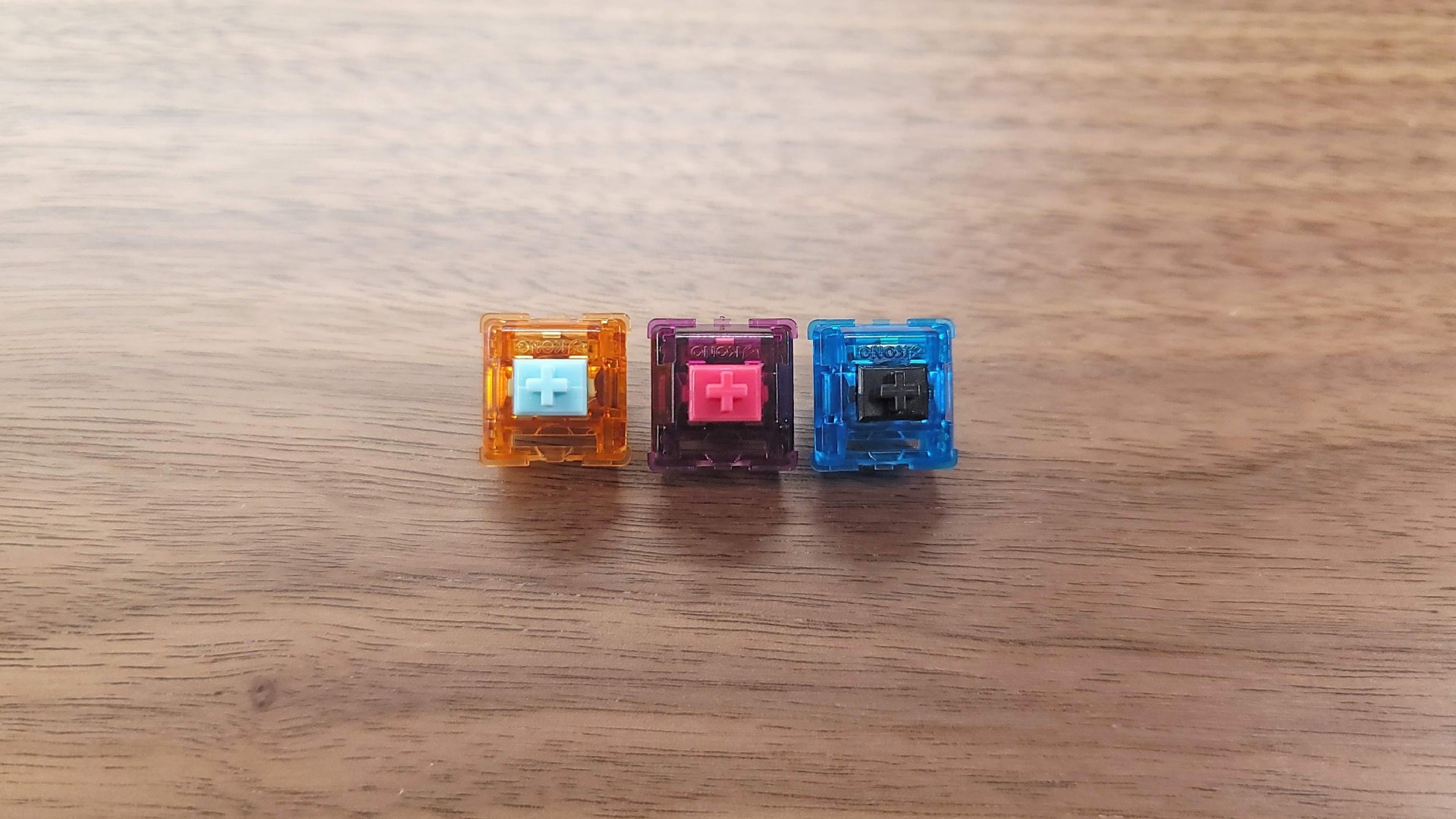Tom's Hardware Verdict
Kono’s switches are smooth and nice to use but lack unique character to justify their high price.
Pros
- +
+ Extremely smooth (Sunset)
- +
+ Sunrise switches feel like Browns done right
- +
+ Midnight switches are very crisp and tactile
- +
+ Compatible with MX-style switches
- +
+ Gem-like appearance
Cons
- -
Nothing standout about sound or feel on Sunrise or Sunset switches
- -
Minor impact on RGB
- -
Midnight switches may be too tactile for some
- -
Sunrise switches are so lightly tactile, they feel almost linear
- -
Comparatively expensive
Why you can trust Tom's Hardware
As the mechanical keyboard hobby has exploded in popularity, the availability of new and exciting switches has grown alongside it. Keyboards with hot-swappable switch sockets make it easy to change switches on the fly, completely changing the sound and feel of your keyboard without having to desolder the PCB or, worse, buy a whole new keyboard. And with some of the best gaming keyboards now supporting hot-swappable switches, there’s no need to break the bank on a fancy DIY kit to enjoy this side of the hobby.
Kono, an online store founded by a team of keyboard enthusiasts from Input Club and Geekhack, recently sent over a selection of its time-inspired, Sunrise, Sunset, and Midnight key switches. Produced by JWK, they offer striking, gem-like looks and factory pre-lubing. The Sunset switch is a delightfully smooth linear switch, while the Sunrise and Midnight switches offer softer and firmer tactility for users who prefer a bump in their typing experience.
Originally available for group buy at the end of last year, the Sunrise and Sunset switches are planned to stock in Q2 2022 and are currently available for pre-order at the Kono store. The Midnight switches are in-stock and available to purchase now.
Kono Sunrise, Sunset, and Midnight Switch Specs
| Switch | Kono Sunrise | Kono Sunset | Kono Midnight |
|---|---|---|---|
| Type | Tactile | Linear | Tactile |
| Total Travel | 4mm | 4mm | 3mm |
| Actuation Point | 2mm | 2mm | 2mm |
| Actuation Force | 45g (63.5g bottom-out) | 48g (63.5g bottom-out) | 50g (69g bottom-out) |
| Lifespan (in keypresses) | 50 million | 50 million | 50 million |
Design of the Kono Sunrise, Sunset, and Midnight Switches
The Kono Sunrise and Sunrise are brand new switches from the company but come to the market with the benefit of lots of user feedback from the exploding switch market. As the keyboard hobby has gained in popularity, we’ve seen some definitive trends in sound and feel from the most popular switches.
Brands like Cherry have fallen from popularity among enthusiasts and have been replaced by the likes of Kailh, Gateron, and, as is the case with the three Kono switches we’re looking at today, JWK. People like the unique sound profiles and unique feels that accompany boutique switches. The Sunrise, Sunset, and Midnight each aim to hit on the notes that made switches with these qualities, like C3 Tangerines or NovelKeys Creams, so popular.
That begins with looks. The three switches each have distinctive colors that match their name. Each features a translucent housing and opaque stem. The Sunrise is orange with a light blue stem. The Sunset is maroon with a deep pink stem. The Midnight is, in my opinion, the prettiest of the bunch with its deep blue housing and black stem. A small, easy-to-miss Kono logo resides at the top of the housing, just above the contact leaf that creates the switching action inside.
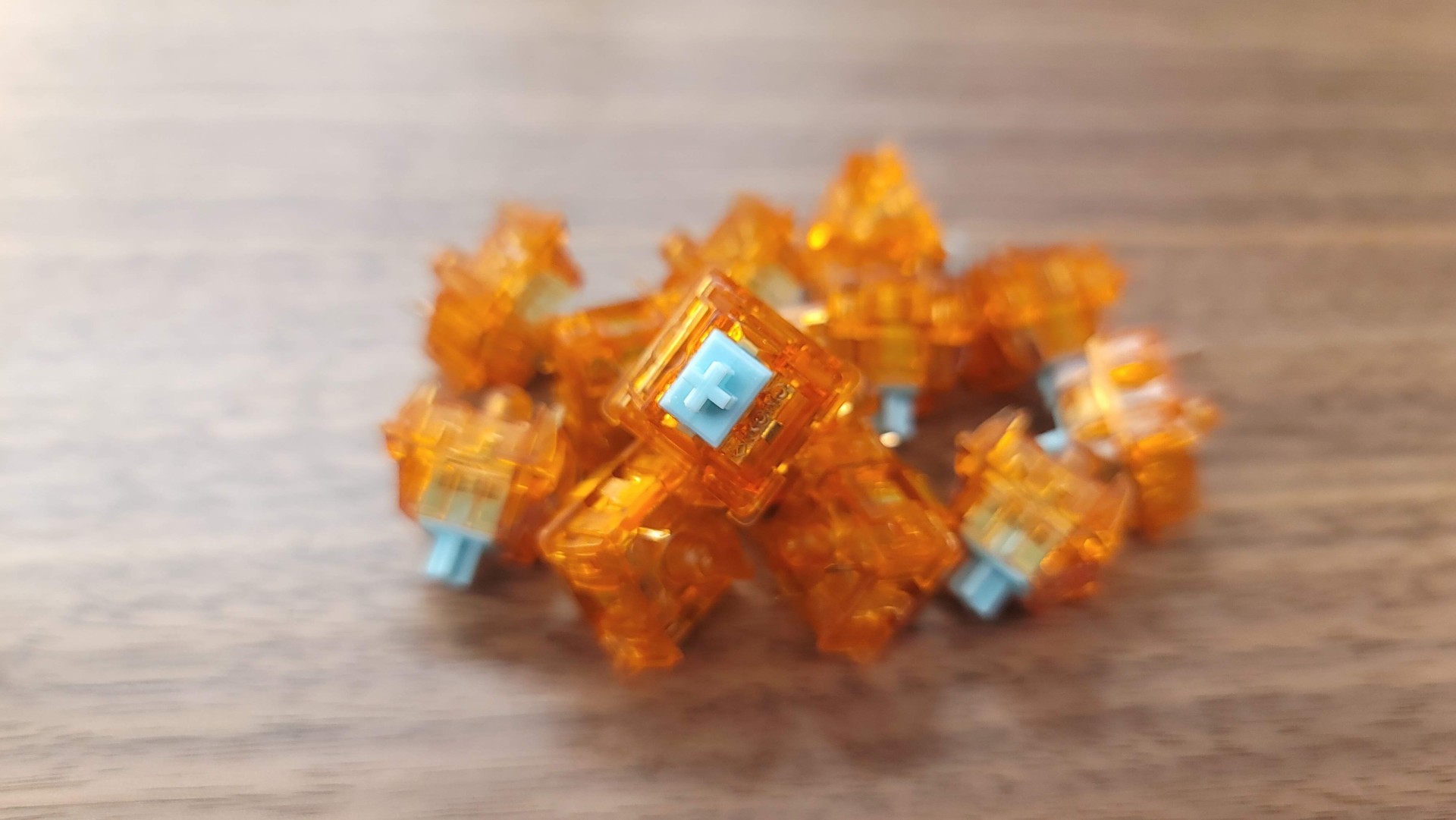
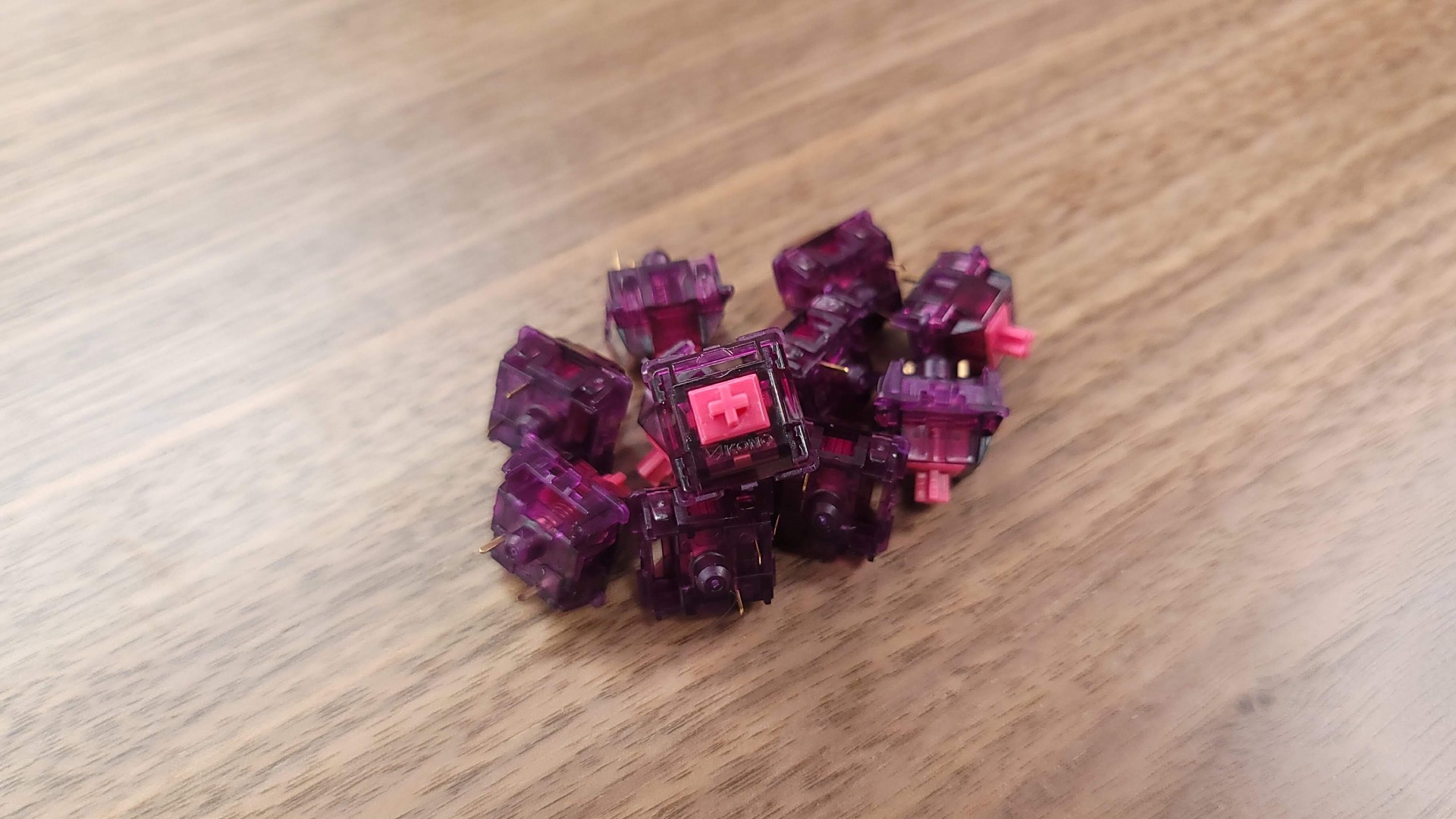

The colored housings have a small but noticeable impact on RGB backlighting. Each switch features a cutout on its south side for your keyboard’s LEDs to shine through. Backlit legends come through cleanly without discoloration because of this gap. The same can’t be said for the rest of the housing. If your keyboard doesn’t expose the switches, this won’t matter at all, but if it does (like on many gaming keyboards), the RGB will definitely be tinted as it passes through the colored housing.
Get Tom's Hardware's best news and in-depth reviews, straight to your inbox.
Even though they all share a similar, time-of-day-inspired approach to style, there are core differences between the three switches. The Sunrise and Midnight are tactile and have a bump you can feel (but no click).The Sunset switch is smooth and linear. Even between the two tactiles, the differences are stark. The Sunrise has a very light tactile bump with 1mm of pre-travel. The Midnight has a very pronounced tactile bump that begins almost as soon as you press the switch. It feels especially snappy and makes the Sunrise feel almost linear in comparison.
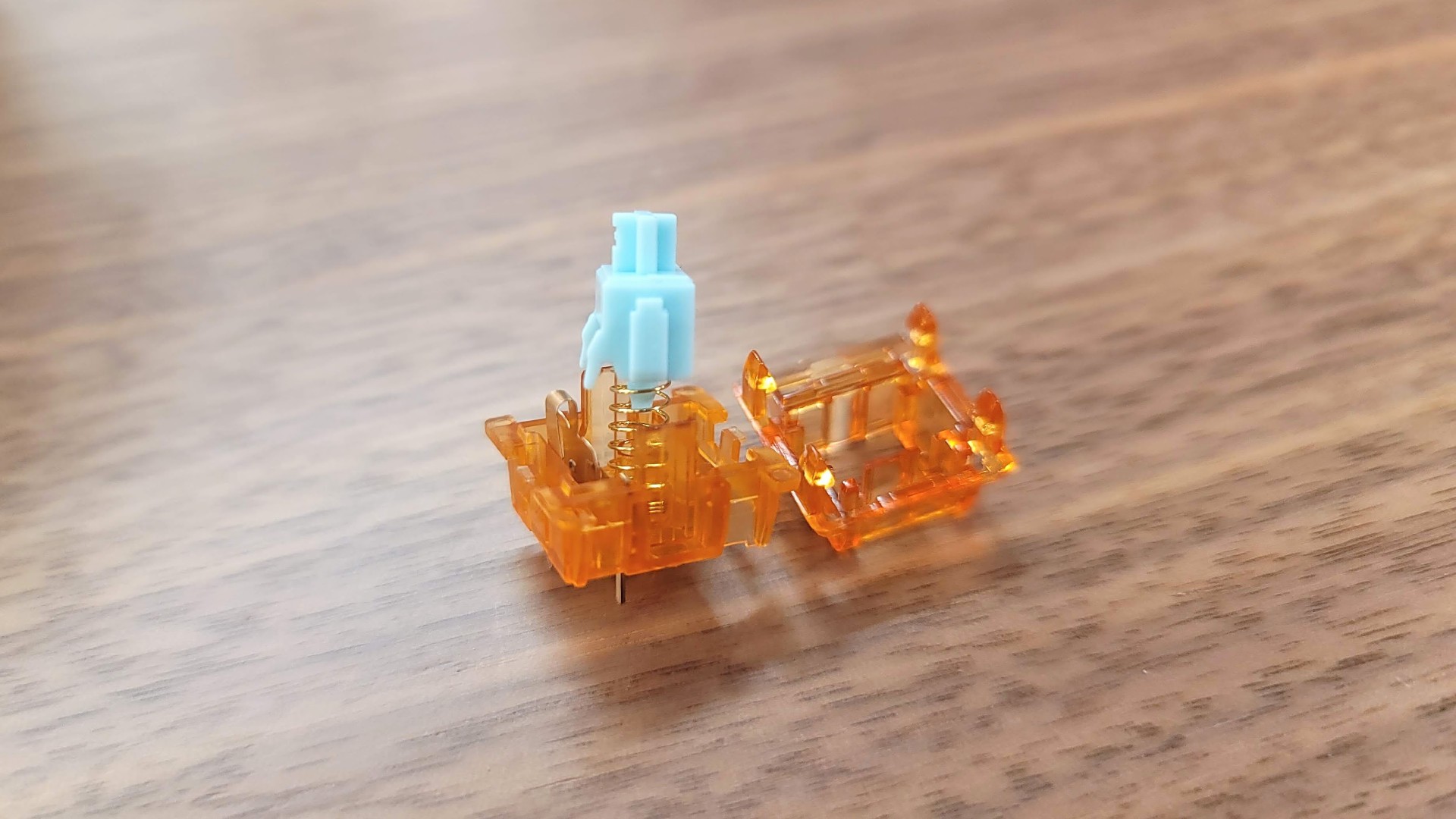
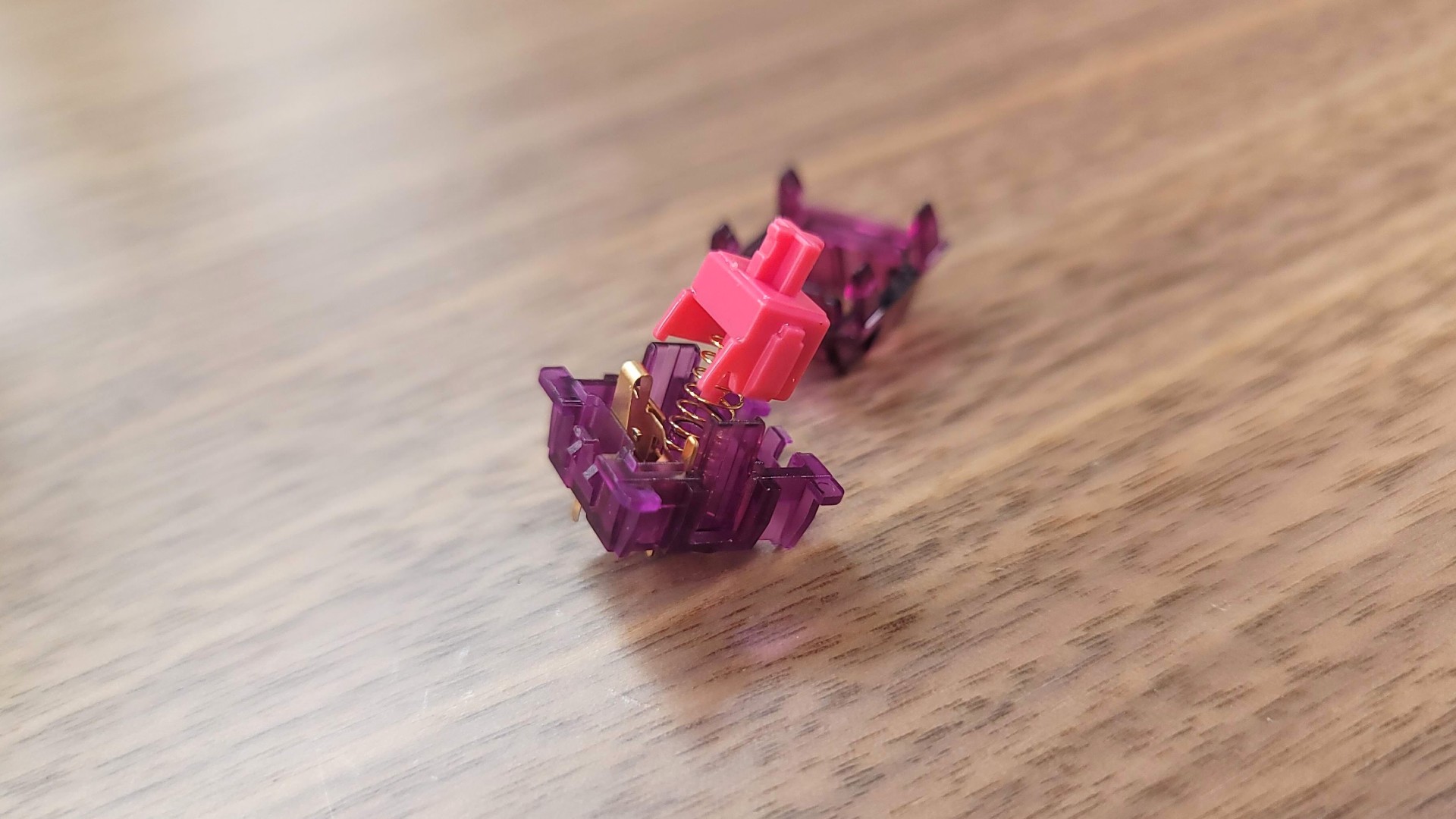

Each switch also uses a different spring weight to provide a unique feel. The Sunrise and Sunset switches actuate at 45 grams and 48 grams respectively and feature an identical bottom-out force of 63.5 grams. The Midnight is the heaviest of all with an actuation force of 50 grams and a bottom out force of 69 grams. I’ll get more into the impact of these weights in the Typing Experience section of this review.
When it comes to their housings and stems, these switches are designed with wide compatibility in mind. They use a standard Cherry-style housing with two retainer clasps on either side to keep the two halves clasped tightly together. They’re also plate-mount, which means they only have three pins on the bottom: two electrical contacts and a large, center pole for stability. This is a double-edged sword. You’ll be able to use them with most hot-swappable mechanical keyboards (low profile mechs excluded), but the electrical pins are easier to bend during installation compared to five-pin switches. The stem also features the expected cross design and will work with the majority of keycap sets available today.
All three switches feature the same composition of plastics. The stems are made of Polyoxymethylene (POM) plastic. It has a low coefficient of friction, which makes it a popular choice for switch sliders. The housings are made of polycarbonate to achieve their unique look. Inside, the springs are gold-plated and custom lengthened to achieve their linear force curves.
Each switch is also factory lubed with a custom grease mixture. After testing all three switches, the Sunset is the only switch that feels “finished” out of the box and wouldn’t benefit from added lubing. All three switches are smooth, but both the Midnight and Sunrise had some residual spring noise. The lubing was also more inconsistent on the Sunrise switches, where some felt less smooth than others.
Typing Experience on the Kono Sunrise, Sunset, and Midnight Switches
For this review, Kono didn’t send out enough switches to outfit an entire keyboard, but I did have enough for a row of letters each. This let me test them in their different positions. Being creative, I was able to fill out three rows of three and do some mock typing to get a good idea of the feel and sound across the entire keyboard, but bear in mind that my test wasn’t with a full set of 104 switches each.
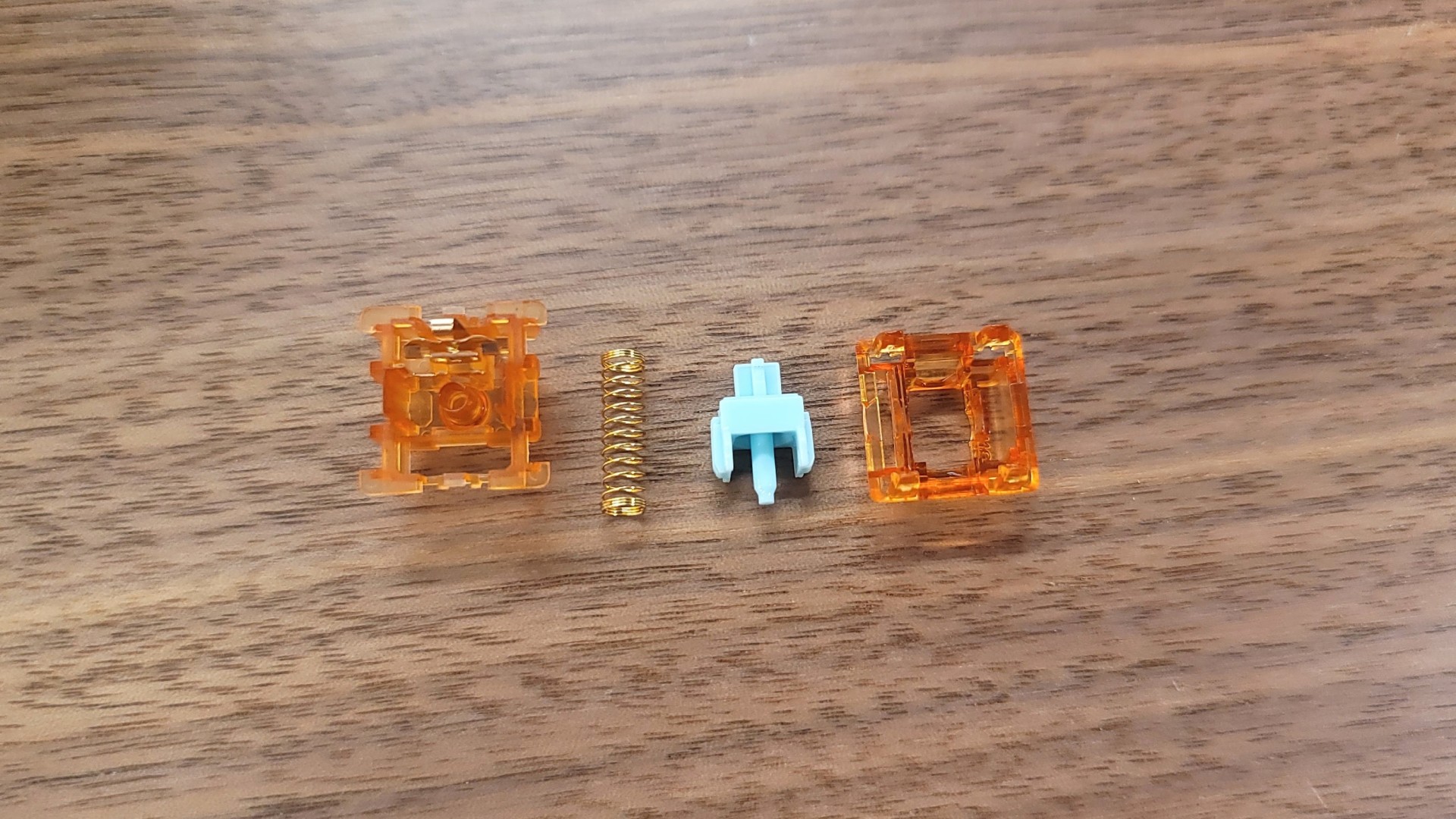
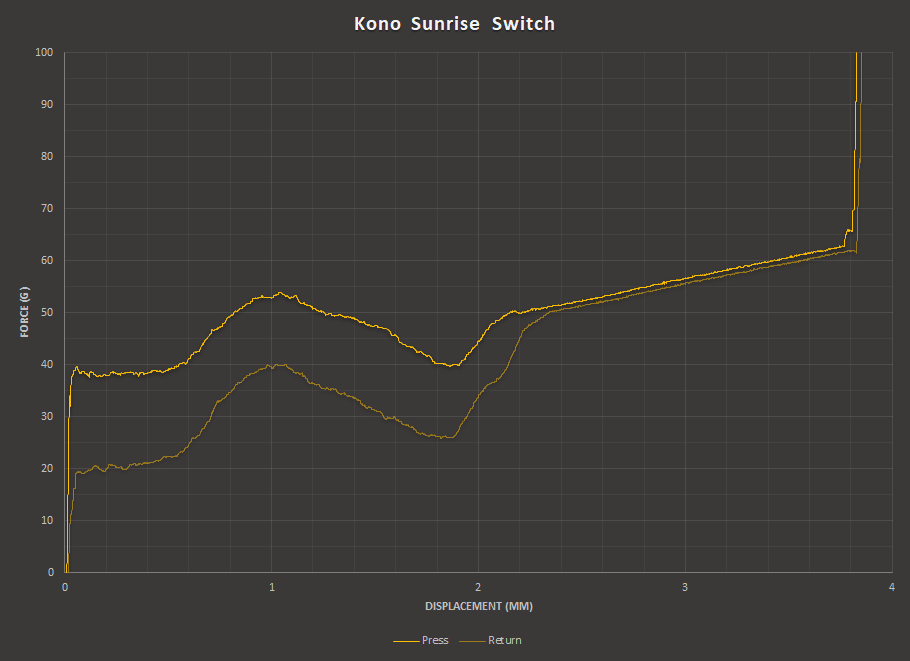
Starting with the Sunrise switches, I was most reminded of Cherry MX Browns. The 45 gram actuation force is a touch lighter than Cherry’s switch, and the bottom-out force is slightly heavier at 63.5 grams (compared to 55g and ~60 grams). The tactile bump is also quite light and occurs about a millimeter into the press, similar to Cherry MX Brown switches. The result is a switch that feels very similar to actuate and bottom-out, but is also smoother and doesn’t have the same irritating spring noise. If you like Browns, the Sunrise switches are an easy choice that improves upon that feel. Because they’re factory lubed, the sound is also less sharp and more rounded, making it nicer to listen to when typing out an essay or email.

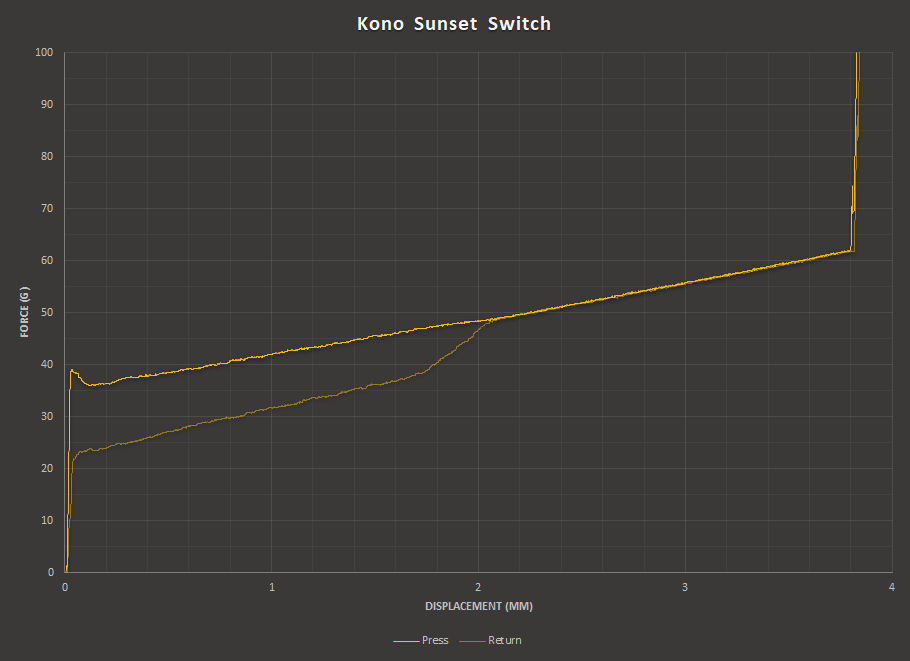
The Sunset switches were easily my favorite. I’m a fan of linear switches, but the improvement isn’t just in the difference between being linear and tactile. Sunset switches feel the smoothest of all three switches. The lube job feels more consistent between switches, too, making them pleasant to use no matter where they’re positioned on the keyboard. With an actuation force of 48 grams and a bottom-out force of 63.5 grams, they’re slightly heavier than Cherry MX Reds (45g and ~60g respectively) and have a more linear increase in resistance the farther down the press you go. You won’t notice the weight difference as much as the improvements to key feel.
It’s easy to look at specs and weights and to say that “Sunsets are like Reds” but that’s really not the case. They’re both smooth, linear switches that are good for gaming. But the mix of plastics and pre-lubing make the Sunsets an unequivocally better switch in both feel and sound. They glide effortlessly, have no spring noise whatsoever, and have a deeper, “thockier” sound than Cherry MX Reds. I also found that I made fewer typos with the Sunsets due to their slightly heavier and more linear springs.


Finally, we have the Midnight switches. Unlike the Sunrise switches, the tactile bump is right at the beginning of the keypress, which lends these switches a sharper feeling and higher pitched sound when typing. They’re also the heaviest of the three switches, so overcoming that initial bump pretty much guarantees a bottom-out with every keystroke. Between the heavier actuation force and hard tactile bump, these switches are best suited for typing instead of gaming.

All three types of switch are satisfying to type on in their own way. The Sunset switches feel the best of the bunch and offer a feel and sound that competes with other popular linears, like C3 tangerines, but have a deeper sound. The Midnight switches are the keyboard equivalent of driving down an old dirt road with the level of bump they provide. To my fingers, they’re a bit too sharp to use extensively. I admit that I’m not the target audience for such a distinctly tactile switch, though. The Sunrise switches are Browns done right, and given how popular Cherry MX Brown switches are, that’s an appealing prospect for newcomers to the hobby. More experienced enthusiasts may find that less exciting, however.
Even though the Sunrise and Sunset switches are good, they lack unique character to make them stand out from other options. The Sunset switches are a very good linear, but they come to the market alongside many other very good linears, like the Kailh x NovelKeys Box Creams, C3 Tangerines, or Alpaca Linears. Unlike those switches, there’s nothing unique or standout about their sound. The same can be said of the Sunrise switches, which really feel like better Browns in a prettier package. Midnights do stand out, thanks to that early and pointed tactile bump.
To be clear, the Sunrise and Sunsets are fine switches. They feel and sound good to use. But, given their high price ($0.80 a switch), simply being “another good switch” isn’t enough to make them stand out in such a crowded market.
Gaming Experience on the Kono Sunrise, Sunset, and Midnight Switch
Because of its smooth, linear travel, the Kono Sunset switch has the advantage when it comes to gaming. As is always the case, it comes down to personal preference, but its smooth travel makes quickly repeated presses faster and easier. The factory lubing also makes hammering away at keys a bit quieter than non-lubed linear switches, which is a plus if you game in a room with other people.
With that in mind, I also didn’t mind gaming on the Kono Sunrise switches. The tactile bump is light enough that it didn’t impede me in any meaningful way and also felt like a better fit for typing. The same is true of Cherry’s Brown switches, but unlike with that switch, they don’t have the same scratchy sound and feel. If you like to mix work and gaming using the same keyboard, these switches are a good choice.
The same can’t be said for the Midnight switches. Because of the pronounced tactile bump at the beginning of the press, there is very little pre-travel to anticipate a keystroke. This does mean that it’s harder to leap from cover by accident, but there’s a sense that the switches are fighting you compared to a switch with a lighter weight and less of a bump. There’s no easing into a keypress with the Midnights, which makes them a poor choice for anything more than Typing of the Dead.
Price and Availability of the Kono Sunrise, Sunset, and Midnight Switches
Kono’s switches are designed to be premium and they’re priced to match. During the pre-order phase, the Sunrise and Sunset switches are each available for $7.99 for a pack of ten switches. Once they’re officially in-stock, that price will go up to $8.49, which is the current price for the Kono Midnight switches. The switches are each sold directly through the Kono Store.
Compared to other premium switches, these options from Kono are fairly expensive. Outfitting a keyboard will cost anywhere from $48 for a 60-percent to $88 for a full-size. After the pre-order, that jumps to $51 and $93, not including taxes or shipping. Those prices make it a hard sell when there are so many great options that don’t cost as much.
A quick overview of the market for popular switches illustrates this fact. At this time of this writing, C3’s linear Tangerine switches are only $0.65 from The Key Company. AshKeebs has Gazzew U4T Bobas, the hot new tactile switch, available for the same price. One of the most sought after linears, the Alpaca, is even cheaper, coming in at only $0.61 each from PrimeKB. NovelKeys has the perennial favorite Cream and Box Cream switches available for $0.65 and $0.70 respectively. Cherry MX RGB switches are the cheapest of all at only $0.40-0.55 a piece from KBDFans. The Konos are certainly the prettiest of the bunch, but they’re much more expensive to purchase.
Bottom Line
If you’re looking to change your switches, there are far worse options than the Kono Sunrise, Sunset, and Midnight. They’re uniquely eye-catching, pre-lubed, and both feel and sound good to type on. It’s just too bad that they’re so expensive. With the exception of the Midnight, they wind up a bit too generic to justify their high price.
If you’re looking for a great linear switch, the Kailh x NovelKeys Box Cream is an outstanding choice. It has a unique sound, great stability, and becomes smoother over time as the plastics break in. If you’re looking for something that hits similar levels of smoothness and sound characteristics, the NovelKeys Silk Series is an excellent choice at only $0.55 a switch. On the tactile side, PCGamingRace’s Glorious Pandas have a bigger bump than Cherry MX Browns without going all the way to Midnight levels of tactility. For that, the Gazzew U4T Boba switches are a good alternative while still having a unique sound and feel.
It speaks well for the keyboard industry that there are so many options for great switches available today. Trying new varieties can be one of the most fun parts of the hobby, allowing you to completely change the feel of your keyboard with less time and money. That same quality makes it more competitive than ever, and while the new Kono switches are very good, the Sunrise and Sunset just don’t do enough to warrant paying more for them versus the competition. The Midnight is more unique, but whether or not you’ll like its level of tactility is an open question.

Chris is a regular contributor for Tom’s Hardware, covering mechanical keyboards, peripherals, and content creation gear.


